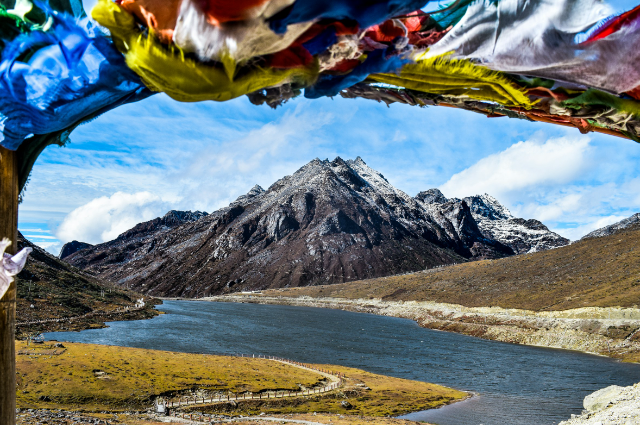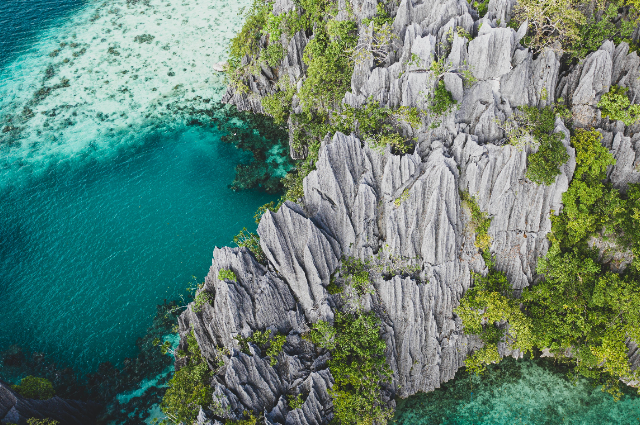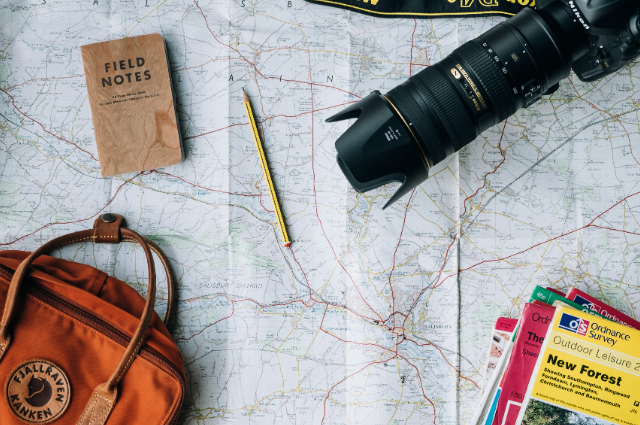
Photo by Mayur More on Unsplash
In the age of social media and mass tourism, many travellers are seeking to escape the overcrowded popular destinations in search of something unique, untouched, and authentic. Offbeat travel destinations are not just about avoiding the crowds, but also about discovering new cultures, unspoiled nature, and personal experiences that remain etched in your memory for years to come. For those who long for a journey that is both exciting and serene, exploring offbeat destinations in India and abroad opens up new horizons.
Offbeat Travel Destinations in India
India is a land of diversity, with an endless array of hidden gems that remain largely undiscovered by mainstream tourists. While destinations like Goa, Jaipur, and Kerala attract millions, several serene and mystical places offer something different. These offbeat locations allow travelers to experience India’s rich natural beauty, spiritual depth, and vibrant cultures in a more personal and peaceful way.
1. Ziro Valley, Arunachal Pradesh
Tucked away in the northeastern part of India, Ziro Valley is an enchanting escape for those who love raw, natural beauty. Located at an altitude of 1,500 meters, this valley is known for its picturesque landscapes, vibrant green paddy fields, and the unique tribal culture of the Apatani people.
Ziro is not just about scenic beauty but is also a cultural treasure trove. The Apatani tribe, known for their sustainable agricultural practices, have a distinct culture, with women of the tribe often donning traditional facial tattoos and large nose plugs. The tribe’s agrarian lifestyle, unique customs, and warm hospitality provide travelers with a rare glimpse into a world where modernity is still at bay.
One of the best times to visit Ziro Valley is during the Ziro Music Festival, usually held in September. This four-day outdoor music festival brings together both Indian and international artists, set against the backdrop of pine forests and the serene valley. Whether you're an adventure lover or someone who enjoys quiet, scenic landscapes, Ziro offers an unforgettable experience.
2. Tawang, Arunachal Pradesh
Located in the extreme northeast, Tawang is a secluded mountain town situated at an altitude of 3,048 meters in the Arunachal Himalayas. Often overlooked due to its remote location, Tawang offers travellers an ethereal experience of Buddhist culture, ancient monasteries, and awe-inspiring landscapes.
The most significant attraction here is the Tawang Monastery, the largest monastery in India and the second largest in the world. Established in the 17th century, the monastery is a hub for Tibetan Buddhism and is home to over 400 monks. The vibrant prayer wheels, colourful flags, and chanting of monks create a spiritual ambience that soothes the soul.
Beyond its religious importance, Tawang is a land of unparalleled beauty. The Sela Pass, one of the highest motorable passes in the world, offers panoramic views of snow-clad mountains and frozen lakes. For adventure enthusiasts, there are opportunities for trekking, river rafting, and even exploring the region's countless lakes, including the Madhuri Lake, which is surrounded by towering peaks and crystal-clear waters.
Tawang is particularly enchanting in winter when the entire landscape is blanketed in snow, offering a fairytale-like setting.
3. Spiti Valley, Himachal Pradesh
For those seeking dramatic landscapes and a taste of remote Himalayan life, Spiti Valley is an offbeat gem located in the north of Himachal Pradesh. Situated at an altitude of over 4,000 meters, Spiti offers a stark yet stunning cold desert landscape, similar to its more famous cousin, Ladakh, but with significantly fewer tourists.
The barren mountains, turquoise lakes, and ancient monasteries define Spiti’s allure. The Ki Monastery, perched on a hilltop overlooking the Spiti River, is a stunning 1,000-year-old monastery that serves as the cultural and religious heart of the region. Travellers can also visit Dhankar Monastery, which offers panoramic views of the valley, and the Tabo Monastery, one of the oldest Buddhist centres in the world.
Adventurers can embark on treks to remote villages like Komic (the highest village in the world connected by a motorable road), Langza, and Hikkim, home to the highest post office in the world. The breathtaking Chandratal Lake, often referred to as the Moon Lake, is another highlight that mesmerizes visitors with its surreal beauty.
Spiti is best visited in the summer months (June to September), as the region remains snowbound for the rest of the year, making travel difficult.
4. Majuli, Assam
Majuli is the world's largest river island, floating peacefully in the Brahmaputra River in Assam. This tranquil island is not only a geographical marvel but also a cultural hub for the Assamese people. Known for its centuries-old monasteries called Satras, Majuli has been the centre of Vaishnavite culture in Assam since the 16th century.
The island is dotted with over 20 Satras, where monks engage in religious rituals, traditional dance, and drama performances. The Satras of Majuli have preserved ancient art forms like Ankiya Nat, a form of classical Assamese theatre, and mask-making, which is a major cultural attraction here.
Majuli's scenic beauty, with its vast expanses of lush green fields and riverside landscapes, creates an idyllic setting for those seeking peace and solitude. The island also attracts birdwatchers, especially during the winter season when migratory birds visit the region.
For an authentic cultural experience, travellers can participate in local festivals like Raas, which is celebrated with much enthusiasm and features traditional performances based on the life of Lord Krishna.
5. Gokarna, Karnataka
For beach lovers who wish to avoid the crowds of Goa, Gokarna, a small coastal town in Karnataka, offers pristine beaches, tranquillity, and a spiritual vibe. Once known primarily as a pilgrimage site for the Mahabaleshwar Temple, Gokarna has now emerged as an offbeat beach destination, attracting those looking for peace and natural beauty.
Unlike the lively and party-oriented beaches of Goa, Gokarna’s beaches, such as Om Beach, Kudle Beach, and Half Moon Beach, offer solitude and scenic landscapes. The town still retains its old-world charm, with narrow lanes, traditional houses, and ancient temples, providing a balance between spiritual and beach tourism.
Many visitors indulge in yoga retreats, meditation, or simple beach camping here, making Gokarna a perfect destination for both spiritual seekers and beach lovers.
Offbeat Travel Destinations Abroad

Photo by Karl Paul Baldacchino on Unsplash
For travellers with an adventurous spirit, there’s a world of lesser-known destinations outside of India that promise unique experiences, stunning landscapes, and rich cultural interactions. Stepping away from the typical tourist trails can often lead to discovering some of the most awe-inspiring places on the planet.
1. Faroe Islands, Denmark
Located in the North Atlantic, the Faroe Islands are a remote group of islands situated between Iceland and Norway. With their rugged cliffs, sweeping fjords, and lush green landscapes, the islands offer a sense of isolation that appeals to those seeking to reconnect with nature.
The islands are a hiker’s paradise, with trails that take you through some of the most dramatic scenery in the world. Sørvágsvatn Lake, a lake that appears to float above the ocean, is a must-visit for its breathtaking views. Mykines, one of the farthest islands, is home to thousands of puffins and other seabirds, offering a dreamlike setting for birdwatchers.
One of the highlights of visiting the Faroe Islands is the hospitality of the locals. With a population of only around 50,000, the Faroese people are known for their warmth and willingness to share their culture. The capital, Tórshavn, is a quaint town with a mix of modern and ancient Faroese architecture, giving visitors a peek into the islands' unique heritage.
Due to its remote location, the Faroe Islands are still largely untouched by mass tourism, making it an ideal offbeat destination for those seeking solitude and adventure.
2. Colmar, France
Nestled in the Alsace region of northeastern France, Colmar is a town that feels like a step back in time. With its colourful, half-timbered houses, cobblestone streets, and picturesque canals, Colmar has a fairy-tale charm that is rarely found in other parts of France.
One of the most beautiful neighbourhoods in Colmar is La Petite Venise, or Little Venice, named for its charming canals that run through the town. Visitors can take a boat ride along the canals, passing under stone bridges and alongside houses adorned with flower-filled window boxes.
Colmar is also the heart of the Alsace wine route, and wine lovers can indulge in tastings of some of the best white wines in the world, particularly Riesling and Gewurztraminer. The town is home to several wine cellars and vineyards, making it a perfect destination for those looking to explore the wine culture of France.
Though relatively quiet compared to Paris or Nice, Colmar is a haven for history buffs, food lovers, and those seeking a relaxed pace of life.
3. Slovenia
Often overshadowed by its neighbours Italy, Austria, and Croatia, Slovenia is a small but stunning country that boasts an impressive array of natural beauty and cultural experiences. From alpine landscapes to charming towns, Slovenia offers travellers a peaceful and pristine experience.
The country’s most iconic site is Lake Bled, a glacial lake surrounded by the Julian Alps. In the middle of the lake sits Bled Island, which is home to a small church. Visitors can row or take a traditional wooden boat, called a pletna, to the island. The lake's emerald-green waters and the nearby Bled Castle, perched high on a cliff, make this one of the most picturesque places in Europe.
For adventure seekers, Triglav National Park, named after Slovenia’s highest peak, Mount Triglav, is perfect for hiking, skiing, and mountaineering. Slovenia is also home to the stunning Postojna Cave and Škocjan Caves, both of which are UNESCO World Heritage Sites. These vast underground systems feature awe-inspiring stalactites, stalagmites, and subterranean rivers.
The capital city, Ljubljana, is a vibrant cultural hub, known for its beautiful architecture, lively street markets, and green spaces. Slovenia’s combination of natural wonders and laid-back cities makes it a true hidden gem in Europe.
4. Palawan, Philippines
While much of Southeast Asia has become a hotspot for travellers, Palawan, an archipelago in the Philippines, remains one of the region’s best-kept secrets. Known for its crystal-clear turquoise waters, dramatic limestone cliffs, and abundant marine life, Palawan is a paradise for beach lovers and adventure enthusiasts.
The Puerto Princesa Subterranean River National Park, a UNESCO World Heritage Site, is one of Palawan’s most famous attractions. The underground river stretches for over five miles and flows through vast limestone caves filled with impressive stalactites and stalagmites. Visitors can take a boat tour to explore this natural wonder.
The islands of El Nido and Coron offer some of the most stunning seascapes in the world. With hidden lagoons, pristine beaches, and vibrant coral reefs, these islands are a haven for snorkelling, diving, and kayaking. The crystal-clear waters allow for excellent visibility, making it easy to spot a variety of marine life, from colourful fish to majestic sea turtles.
For those seeking solitude, the lesser-visited islands of Port Barton and Balabac offer untouched beaches and remote jungle experiences. Whether you want to lounge on a quiet beach or explore the underwater world, Palawan provides a perfect offbeat adventure.
5. Chefchaouen, Morocco
Tucked away in the Rif Mountains of northern Morocco, Chefchaouen is a small town that has earned the nickname “The Blue Pearl” for its striking blue-washed buildings. Wandering through Chefchaouen’s narrow, winding streets feels like stepping into a dream, with every corner offering a new shade of blue.
Originally painted blue by Jewish refugees in the 15th century, the town has become an Instagram favourite, but it still retains its charm and authenticity. The laid-back atmosphere of Chefchaouen is a stark contrast to the hustle and bustle of larger Moroccan cities like Marrakech and Fes. Visitors can spend their days exploring the town’s medina, relaxing in small cafes, or hiking in the nearby mountains.
One of the highlights of visiting Chefchaouen is its proximity to the Talasemtane National Park, a protected area known for its rugged cliffs, dense forests, and waterfalls. Hiking through the park offers breathtaking views and a chance to connect with nature. Chefchaouen is also a great place to shop for traditional Moroccan handicrafts, including woven blankets, pottery, and leather goods.
Conclusion

Photo by NEOM on Unsplash
Offbeat travel destinations offer a unique opportunity to explore the road less travelled. These places, whether it’s the serene Ziro Valley in India or the dramatic landscapes of the Faroe Islands, provide travellers with authentic experiences, cultural insights, and a deep connection to nature. Venturing beyond the well-trodden paths allows travellers to discover hidden gems that are far from the noise and crowds of mainstream tourism, leaving them with unforgettable memories and stories. Whether you seek adventure, tranquillity, or a cultural journey, these offbeat destinations will captivate your heart and soul.
General Travel Tips, Dos & Don’ts
Travelling, whether to an offbeat destination or a popular tourist spot, comes with its own set of challenges and opportunities. A little preparation and awareness can make your journey smoother, safer, and more enjoyable. Here are some general tips and guidelines on what to do and what to avoid while travelling, ensuring a great experience:
General Travel Tips

Photo by Annie Spratt on Unsplash
1. Plan and Research
Research your destination beforehand. Understand the local culture, weather conditions, currency, and basic laws. Knowing public transportation options and important landmarks will help you navigate your surroundings better.
2. Pack Smart
Always pack light, but don’t forget the essentials. A portable charger, travel insurance documents, copies of important identification, medication, and weather-appropriate clothing should be on your checklist.
3. Stay Healthy
Ensure you are up to date with necessary vaccinations and carry basic medicines (pain relievers, allergy pills, and a first-aid kit). Stay hydrated and eat carefully, especially when trying street food in foreign locations.
4. Learn a Few Phrases
Learning a few words or phrases in the local language (such as greetings, thank you, or asking for directions) can go a long way. It helps you connect with locals and shows respect for their culture.
5. Get Travel Insurance
Always have travel insurance. It covers unexpected events like medical emergencies, trip cancellations, or lost luggage, ensuring you're financially protected in case of unforeseen circumstances.
6. Stay Connected
Keep your family or friends informed of your whereabouts. Sharing your itinerary or frequent updates via messages can provide peace of mind.
7. Respect Local Cultures
Every place has its customs and traditions. It’s important to observe and respect these, especially in conservative societies. Be mindful of how you dress and behave in religious or cultural sites.
8. Keep Your Documents Secure
Always keep your passport, visa, and important travel documents in a secure place, such as a money belt or a hotel safe. Having digital copies stored in a secure cloud service is also a good backup.
Do’s While Traveling
1. Do Respect Local Customs and Traditions
One of the best ways to enhance your travel experience is by being respectful of local cultures. Whether it’s dress codes, social behaviour, or religious practices, following local customs shows respect and earns goodwill from the locals.
2. Do Keep an Open Mind
Embrace new cultures, experiences, and cuisines. Travelling is about stepping out of your comfort zone and experiencing new things, so keep an open mind and be ready to adapt to different situations.
3. Do Carry Cash and Cards
While most urban areas accept credit cards, smaller or rural locations may still rely on cash. Always have some local currency handy for markets, transportation, or food stalls.
4. Do Be Aware of Your Environment
Stay vigilant and aware of your surroundings, especially in crowded places. It helps prevent pickpocketing and ensures you stay safe. Trust your instincts—if something doesn’t feel right, leave the area.
5. Do Support Local Businesses
Buying souvenirs from local artisans, eating at family-run restaurants, or using local guides ensures that your money contributes to the local economy, supporting communities directly.
6. Do Practice Sustainable Travel
Be mindful of your environmental impact by avoiding single-use plastics, conserving water, and choosing eco-friendly accommodations and tours. Always leave the places you visit as clean or cleaner than when you arrived.
7. Do Dress Appropriately
Dress according to the local culture, especially when visiting religious sites or conservative regions. For example, many temples, mosques, or churches have specific dress codes (like covering your shoulders or wearing long pants/skirts).
8. Do Carry Copies of Important Documents
Always carry photocopies of your passport, visa, and travel insurance. It’s also smart to keep digital copies stored safely online in case your documents are lost or stolen.
Don’ts While Traveling
1. Don’t Flash Valuables
Avoid wearing expensive jewelry, or watches, or showcasing high-end gadgets like cameras in unfamiliar places. It may attract unwanted attention from thieves or scammers.
2. Don’t Be Disrespectful of Local Cultures
Don’t behave in a way that might be considered disrespectful. For example, avoid public displays of affection in conservative cultures, refrain from photographing people without their consent, and never touch religious artefacts or statues unless it’s explicitly allowed.
3. Don’t Overpack
Carrying too much luggage can become a hassle and restrict your movement. You also risk losing items or paying extra baggage fees. Stick to the essentials and pack clothes that are versatile and easy to layer.
4. Don’t Ignore Local Laws and Etiquette
Every country has its own set of rules, and ignorance is no excuse for breaking the law. For example, chewing gum is illegal in Singapore, and consuming alcohol in public spaces is prohibited in many Middle Eastern countries.
5. Don’t Be Rude to Locals
Even if you find yourself frustrated or confused, always remain polite when dealing with locals, hotel staff, or service personnel. Being kind and patient goes a long way in foreign lands.
6. Don’t Over-schedule Your Trip
Leave room for spontaneity. Don’t jam-pack your itinerary with activities that may leave you feeling exhausted. Travel should be enjoyable, so slow down, explore at your own pace, and enjoy unexpected discoveries.
7. Don’t Depend on Just Your Phone
While smartphones are incredibly useful, don’t depend solely on your phone for directions, bookings, or information. Carry a physical map or keep important details written down, especially in places with limited internet access.
8. Don’t Forget Travel Insurance
Failing to purchase travel insurance can be a costly mistake. It provides vital coverage for medical emergencies, trip cancellations, or lost baggage, giving you peace of mind during your travels.
Conclusion
Travelling to new places, whether offbeat or well-known, can be one of the most enriching experiences of your life. By being prepared, respectful, and mindful of your surroundings, you can ensure a safe and rewarding trip. Following these dos and don’ts will not only keep you safe but also allow you to engage more deeply with the culture and environment of your destination. Safe travels!
